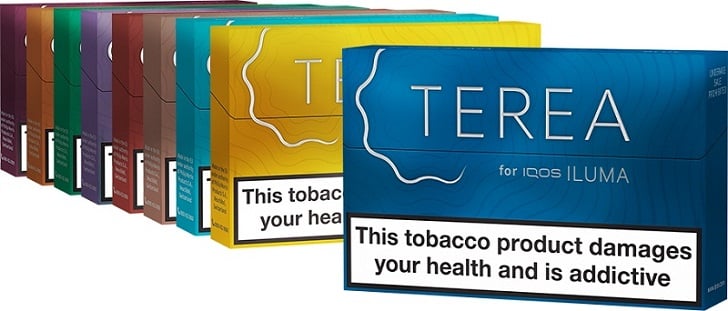
Unless you live in one of the markets where the tobacco companies are trialling their Heat not Burn products, the best way to start vaporizing tobacco right now is to get yourself something like the PAX 2. These devices aren’t cheap though, so it’s natural that many people would like to see something cheaper. It’s just as natural that there are cheap alternatives on the market, many of them made in China.
Do bargain Chinese vaporizers exist?
It would seem sensible that the Chinese have a head start when it comes to tobacco vaporizers. After all modern e-cigarettes use a lot of the same technology, and they were invented in China. The most sought-after mods and atomisers come from the UK, USA, Greece and the Philippines, but those are limited edition products that carry an eye-watering price tag. Most e-cigs, even high end ones, are made in China – and the quality is often astonishingly high. So you’d expect there to be a wide range of great but affordable Chinese-made HnB products appearing.
Well, you’d be surprised, because there isn’t. There are some devices on the market, but at this point none of them are a tempting buy even at the often low prices. Some of them are better than others, but none are anywhere close to being a match for the mighty PAX 2. Of course you wouldn’t expect them to be given the lower price tag, but the question is are they worth buying at all? The simple fact is most aren’t.
Looking at one popular Chinese-made vaporizer, which I won’t name (but it’s sort of between a Titan 1 and a Titan 3) shows up a lot of the problems found in most budget models right now. If you look at the reviews for this device you’ll find the same comments coming up again and again. Some are positive, some a lot less so. As you’d expect the price is pretty popular – it costs less than a third what you’d pay for a PAX 2. It’s also compact and light, which are always nice in something you plan to carry around in your pocket.
The negatives tend to cancel out these plus points, though. Most reviewers complain about how hot the vapour is – some found it too hot to comfortably inhale. Most commented on its strong plastic taste. These are not minor problems. First of all they make it unpleasant to use, and this is supposed to be a recreational product – it’s meant to be fun. Secondly they raise worries about the quality of the materials and workmanship that have gone into it.
Getting what you pay for
Part of the reason the PAX 2 is more expensive is the amount of time spent on perfecting the design. It’s been carefully engineered to deliver vapour at a comfortable temperature. That’s why if you look at a cheap vaporizer the heating chamber is almost always at the top end, just below the mouthpiece, but on the PAX it’s at the base of the device. It looks like a lot of the Chinese manufacturers have borrowed heavily from e-cig technology, but that isn’t always a good idea. It takes a lot less heat to vaporize e-liquid than it does to get a satisfying vapour from loose tobacco, and that means temperature isn’t so much of an issue. The PAX solves it by having a channel running the length of the device, from the chamber to the mouthpiece, so the vapour has time to cool slightly before you inhale it.
That plastic taste is an even bigger worry. The chamber is metal lined, but somewhere between the tobacco and your mouth the vapour is coming in contact with plastic that isn’t capable of handling the temperature. If you can taste plastic then those components are slowly degrading, and they’re releasing chemical fumes while they do it. Inhaling that probably isn’t the best idea. So another reason for the higher cost of a quality vaporizer is that it uses better materials, ones that can handle the temperatures they’re exposed to.
Another option is a dry product vaporizer attachment that fits on an e-cig battery. These are easy to find on sites like FastTech, and while they’re designed for wax mixtures and e-solid pastes some people have also tried using them for tobacco. Generally they’re pretty disappointed. These devices usually don’t deliver anywhere near enough power to get a really satisfying vape, and if they do they often burn the tobacco. The coil setup they use can’t compete with a properly designed heating chamber.
Future trends?
The PAX isn’t the only option out there, of course. We’ve looked at Philip Morris’s HeatStick products too, and the Ploom Pod systems. You certainly won’t find any low-grade plastic in those; they’ve been very carefully designed to avoid that sort of problem, and that’s a long and expensive process. These companies have spent a lot of money getting it right, and it shows.
On the bright side, something that takes a lot of development and research to do once is a lot easier the second time. As HnB products become more popular, and the initial challenges are dealt with, more companies will be able to build on what’s already been learned to produce a good product. Again we’ve seen this with e-cigarettes. At first China only produced cheap cigalikes, with the higher-end devices being made by western modders. Once they realised demand was there, however, the Chinese started making their own versions. At first they copied them, which is why cloning became such a toxic subject among vapers. Then they started to improve on existing designs and come up with their own ideas, and now vaping is dominated by companies like Kanger and Aspire.
Given a bit of time the same will happen with Heat not Burn. If the demand exists, large manufacturers will try to meet it. The result should be a choice of high quality but low price products that will give you a great vape without that hint of burning plastic.











